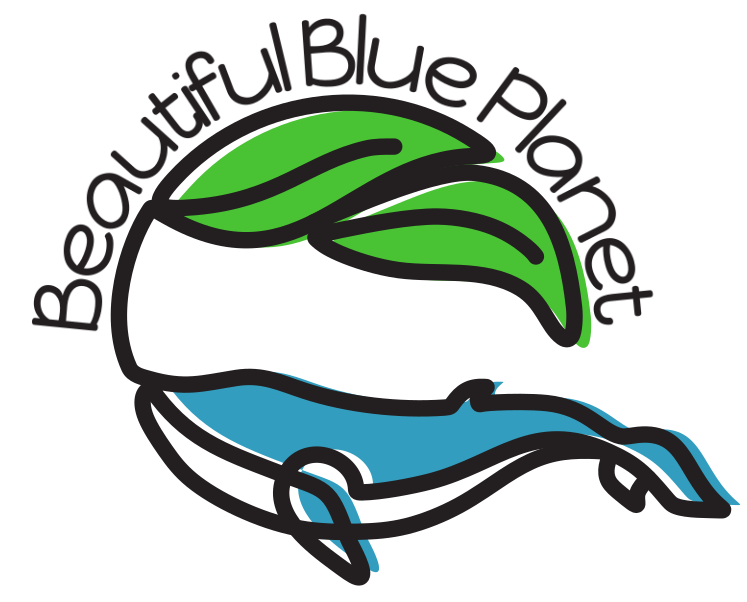What’s the problem and what can we do about it?
Microplastics. They’re tiny, less than 5 mm across.
Some can be seen with the naked eye. Many cannot.
And they’re all over the earth. In every ocean, at the very bottom of the ocean to the very surface, in the arctic, on mountain tops, on glaciers, in streams, rivers, and lakes, in the air inside and outside of our homes, in our soils and gardens, in our food, in our bodies, in the bodies of from 36% to 100% of various species of marine animal from planktons to whales, in more and more of terrestrial animals, and in freshwater animal species.
And I repeat: it’s in our food, our drink, our bottled water, beer, sea salt, seafood, and on and on.
The hazards of these microplastics are not yet fully known. But there are chemicals added to plastics that do cross the blood/ brain barrier. These chemicals that leach from the bits of plastic float around in our bodies and affect our organs. And some tiny bits of plastic float around in our bodies, they pass into our circulatory system and even lodge in the placenta. (Source)
This problem is fairly new, it has skyrocketed in the past 20 years or so– the same time a vast increase in single-use plastic production and use occurred, the same time we saw a huge increase of synthetic fibers in textiles, and the same time overall plastic production has risen significantly.
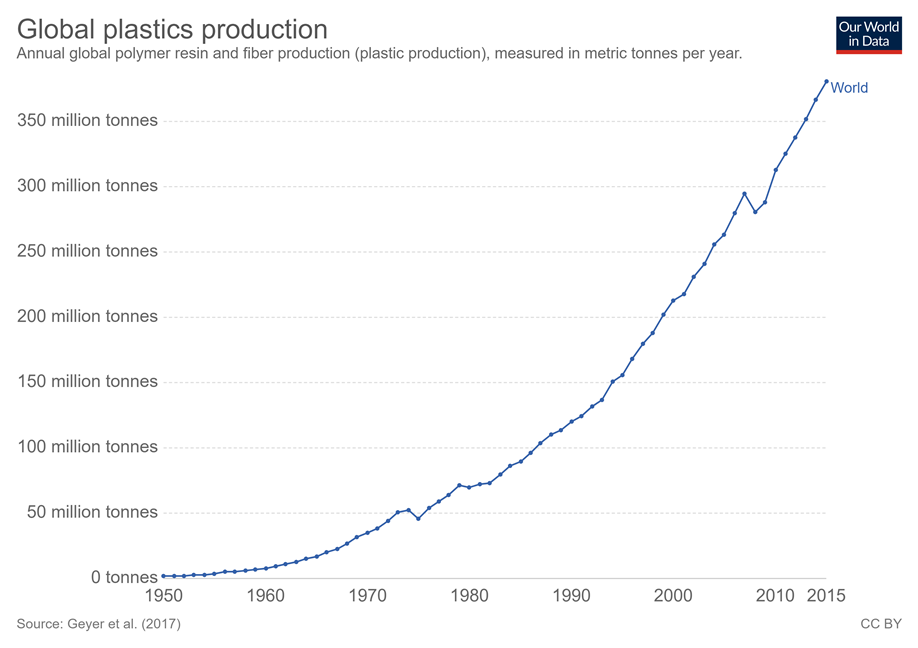
The problem with microplastics?

They’re built to last. To not get biodegraded into molecules that can be reabsorbed normally into living systems. Sure, so are all of our man-made infrastructures, buildings, and cars, etc.
But plastics oxidize. They get battered about once they’re on the ground or in water. And they break into smaller and smaller pieces until they become microplastics. Their lightness allows them to become mobile.
Large, small, and tiny pieces of plastic blow in the wind and get into waterways and many end up in the oceans. Some settle in freshwater bodies.
Plastic is often confused with food by animals. They’ve never seen it before. They evolved to eat the things that nature provides for them, to respond to certain stimuli and they can grab their food. But plastic is either in the mix with their food of confuses them for food. And when this keeps happening more plastic fills their bodies and less food gets in to provide nourishment and energy for them. And animals are dying as a result.
This is a relatively new problem and it is increasing perilously now. It’s depressing and scary.
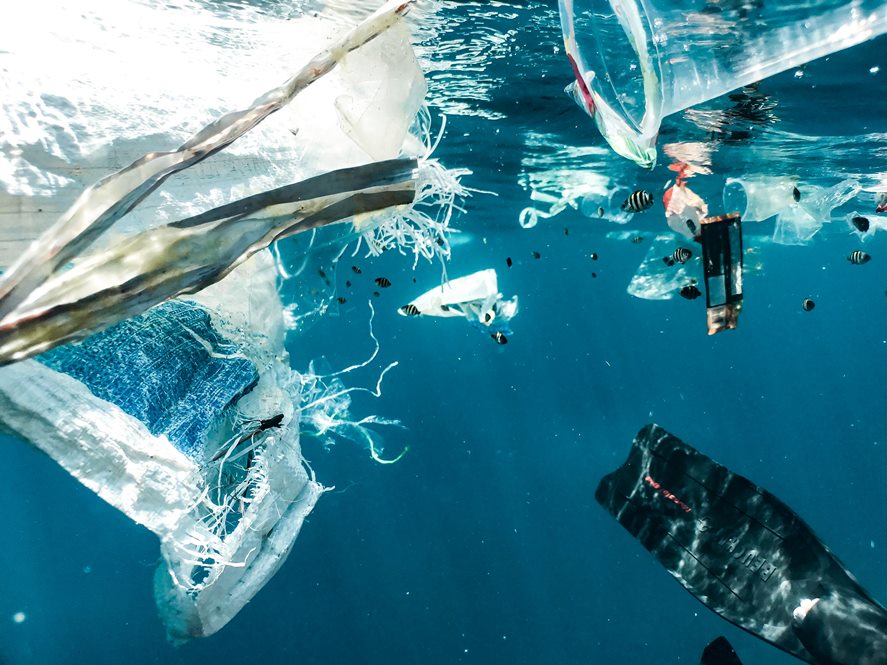
Jensen via Unsplash
So what can we do about it? There are solutions we can take right away to at least prevent the continued pace of generating new microplastics.
Here’s where they come from
There are two major ways microplastics end up in our environment. Litter and effluent.
1. Litter
Larger pieces of plastic get dropped by people, by the waste management process, and any other way that litter gets into the environment. The pieces blow around, get moved by rains, especially heavy rains—which are becoming more and more frequent, and make their way into storm drains and on into waterways. And all waterways eventually make their way to the oceans.
The litter on the beach (or river bank) you may see is possibly fairly old. On a beach it gets rolled back and forth with wave action, brushing over sand and rocks, and it gets broken into smaller pieces. Add in sunlight, which oxidizes it, and it gets brittle and easier to break down into even smaller pieces. This happens many times before the plastics get driven out to the deeper ocean by wind, waves, and currents. This actually presents an excellent opportunity to pick it up and get it out of the ocean and disposed of properly—an ocean clean-up activity!
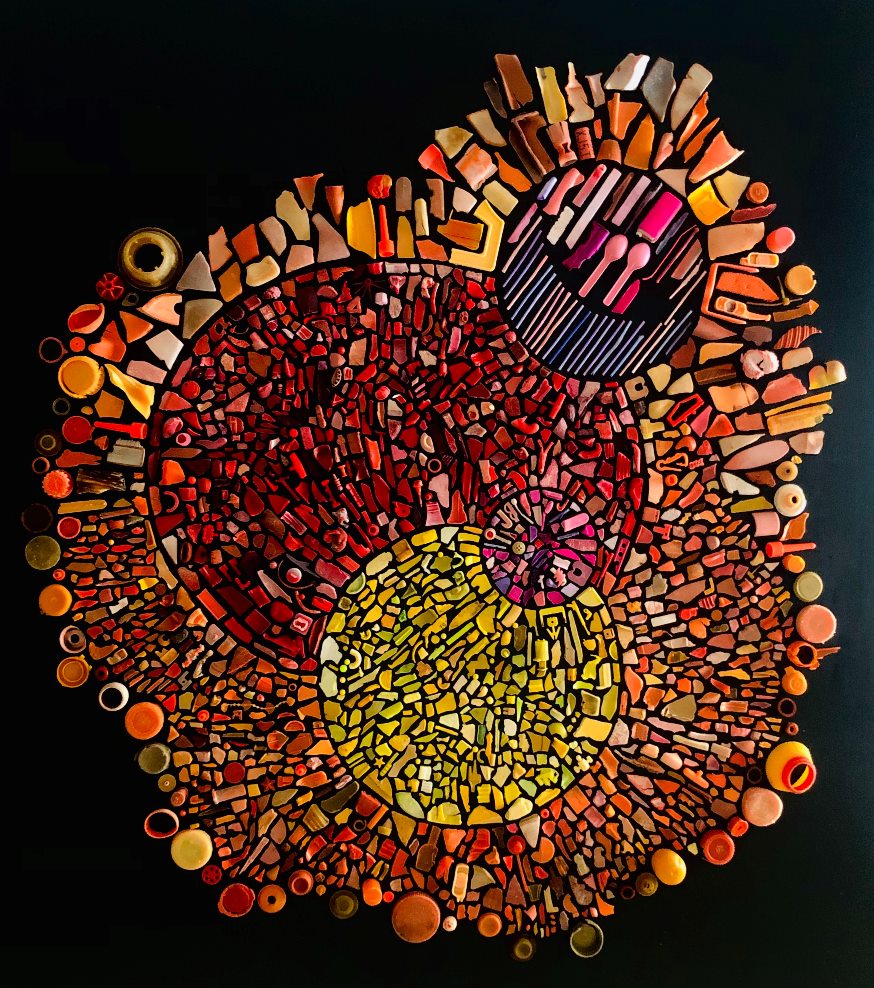
Credit: dan lewis via Unsplash
Larger plastic pieces on land get abraded, ripped, torn, oxidized, and shredded into smaller pieces, rendering them to microplastics. These tiny plastic bits are much more easily transported by wind and water. And off they go into the larger environment by way of air or storm drains, waterways, and finally into the ocean.
Countries with less waste management infrastructure end up contributing more to the problem. In the US where we have good waste collection infrastructure, we still have plenty of leakage from that system, from blowing and spilling, for example. So we still contribute plenty to the problem.
Sadly, even driving generates microplastic litter. Yes, the friction where “the rubber meets the road” rubs off bits of its components, invisibly, which include about 19% natural rubber and about 24% synthetic (plastic) rubber, as well as other plastics, and some even up to 60% plastic.
2. Effluent
From our households, the laundry room especially, fibers from synthetic clothing and other synthetic materials, are sent out to the waste-water treatment plant. But microplastics and microfibers are too small to be filtered, so they pass through the system. They continue on to waterways and eventually out to the ocean. Plastics have become so prevalent in our clothing, especially in the last 20 years. Think of fleece, it’s pure plastic. It sheds plastic microfibers. Over the past decade or more, fleece has become extremely popular. It has good insulating qualities. And it’s soft. So it has been used in sweaters, bathrobes, blankets,…even children’s clothing.
Research has found that for an average sized laundry load of 13 lbs., over 700,000 fibers may be released. (Source) This indicates to scientists that this is most likely an important source of microplastics in aquatic habitats.
Think of all the products that are made of synthetic fibers. It seems there are more and more every single time I go to the store! Cleaning products like synthetic wipes for every purpose, from cleaning your face to your….elsewheres, dusting your house, mopping the floor, polishing the furniture, maintaining your leather shoes,…synthetic sponges, mops, wipes.
I hate to imagine what the release of microfibers from all the new synthetic cleaning tools is in the American household. You can be sure all these microfiber cloths, wipes, towels, etc. are leaving a trail of tiny fibers on surfaces, in the air, and are getting washed down the drain and…well, through the rivers and on to the ocean. And into the residents of the household, too.
And, don’t be fooled by the fact that the ones that are made of recycled plastic are environmentally friendly. They’re still made of plastic. And a plastic that is in fine, pernicious little microplastic fibers.
What are the ways to end this problem?
1. Stop using single-use plastics.
Every one of us can restructure our lives to avoid using single-use plastics. And when manufacturers feel the pinch of reduced demand, and know what people want, they’ll turn to other, better materials and products to make.
2. Participate in beach clean-ups, river clean-ups, and even basic litter pick-up.
Do it whenever and wherever you go. Join a group that does it yearly. Or do it on your own….at the beach, at the river, in a park, on the street or a parking lot. Do it occasionally or frequently. Keeping plastics off the ground in the first place helps!
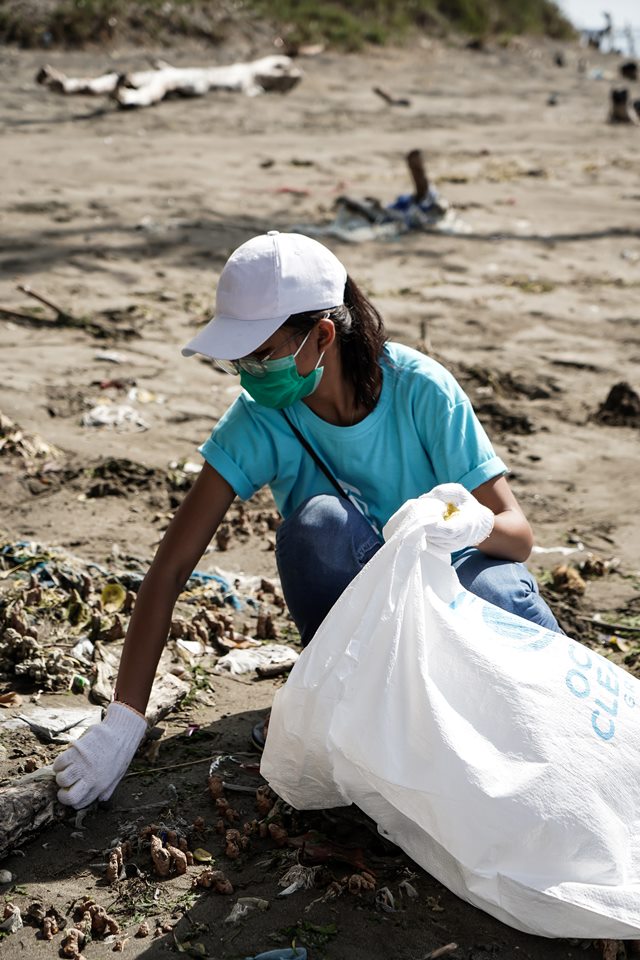
3. Switch to natural fibers for your clothing and linens.
4. Attach a washing machine filter that works to keep up to 87% of fibers out of its effluent.
Washing machine filters help keep microfibers from waterways. They’re a bit pricey, but they help reduce the laundry contribution to the problem! It’s not 100%, and the fibers still exist, but it’s significant! (Source)
5. Support legislation that bans single-use plastics
News of the magnitude of plastic in oceans, and of microplastics, prompted the EU to ban single-use plastics within 13 months. In July, 2021 they were gone. This top down type of requirement helps bring systemic change to our damaging ways.
Microbeads have been banned in the US in 2017. Those are the beads that help exfoliate your skin. They were in other cosmetics and cleaning agents as well. Now they are replaced with natural substances like ground walnut shells and coconut shells. These are materials that will biodegrade wherever they end up.
How long has the microplastics problem been going on?
It’s been going on for a very long time. Before it was discovered, it had been out of view and out of our notice.
Only fairly recently, in 1997, Charles Moore discovered the first noticed ocean gyre in the north Pacific, now called the Great Pacific Garbage Patch. It was commonly thought that it was more of an island. But scientists have studied it and have described it more as a soup of tiny pieces of plastic. A lot of plastic!
Since then, scientists have found deep layers of microplastics that have settled on the ocean floor. Some plastics are heavier than sea water and some aggregate or become covered with sea life or a biofilm that weighs them down so they sink and settle onto the ocean floor. Underwater currents further carry them to certain areas where these microplastics are deposited and have accumulated in amounts that shocked the scientists….and most of it was made of clothing fibers. This has been going for a long time. As soon as plastics were being made, they’ve been finding their way into the ocean and breaking down into tiny bits and lying on the ocean floor, since around the 1950’s.
But the rate has been growing fast and furiously especially over the past two decades when single –use plastics exploded into the marketplace and synthetic fiber use in clothing grew enormously.
Why is it so bad now?
Microplastic comes in many shapes, types, and colors. It comes in the form of fibers, from synthetic clothing to fishing lines and nets.
“Almost everybody has heard of the infamous ocean ‘garbage patches’ of floating plastic, but we were shocked at the high concentrations of microplastics we found in the deep-seafloor.
“We discovered that microplastics are not uniformly distributed across the study area; instead they are distributed by powerful seafloor currents which concentrate them in certain areas.”
Dr. Ian Kane, University of Manchester
There’s just so much microplastic now. And most of it has been added just in the last two decades, rapidly adding to what had been accumulating more slowly over several decades.
What will you do from here?
Sure, the enormity of the microplastics problem is enough to make you run and hide your head in the proverbial sand. But…there would be microplastic there, too! We must tackle the problem by facing it straight on and taking the actions that help. Pick one or two to start:
- Designate a good water bottle for you and each family member.
- Pick a good time and place to pick up litter. Be prepared to make random acts of kindness to the earth by keeping a few bags and gloves in your car or backpack to pick plastic litter up off the ground and dispose of it properly.
- Look closely at clothing labels and stick to purchasing those made with all natural fibers, like cotton, wool, silk, and linen.
- Add a washing machine filter to help keep microfibers from getting loose in the environment.
- Always say yes to legislation that reduces our use of plastics and especially single-use plastics.
- And change up your lifestyle to use less plastic.
Do at least these things for the health, well-being, and future of your children and grandchildren, for every other child you see and meet, and for every beautiful living creature on this beautiful blue planet!
We leave this earth to our children. Let’s fix the problems we’ve caused.

Related Reading:
What are Microfibers? Where Do They Come From? Why Are They a Problem?
Main References:
New Atlas ( Microplastics, Blood-Brain Barrier)
